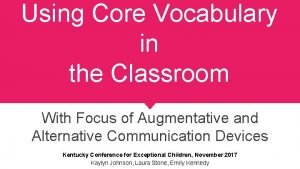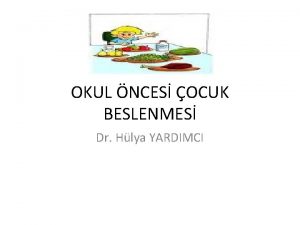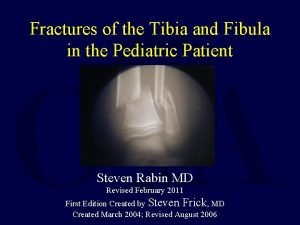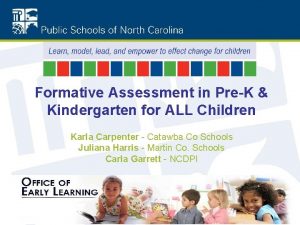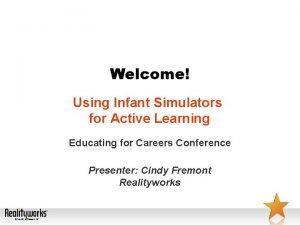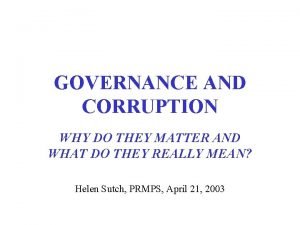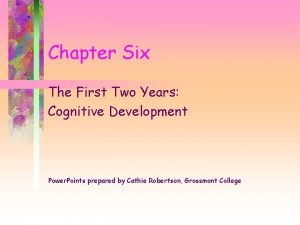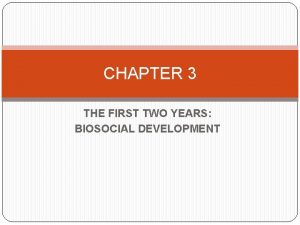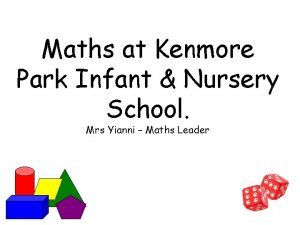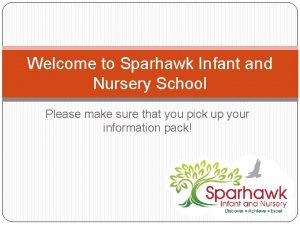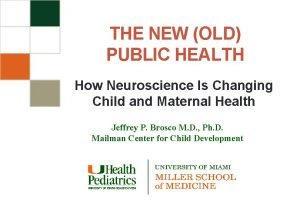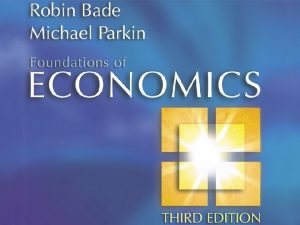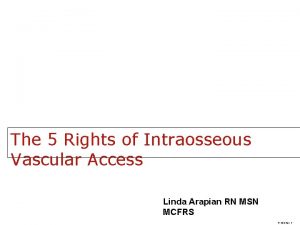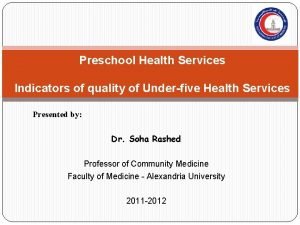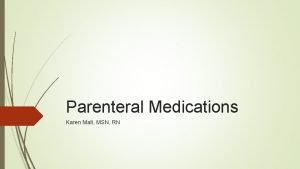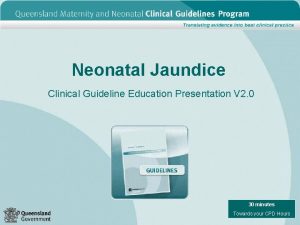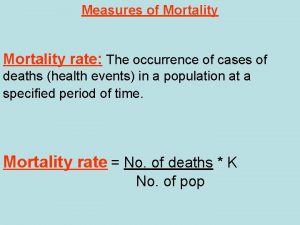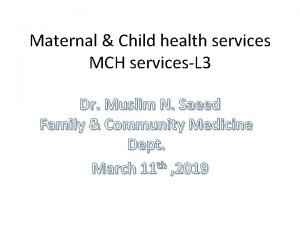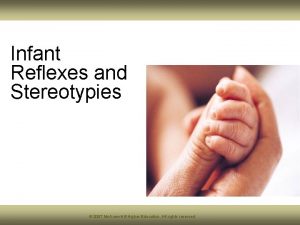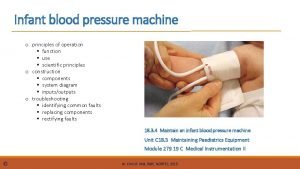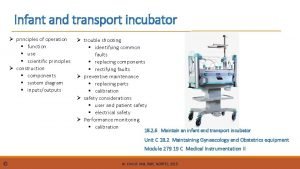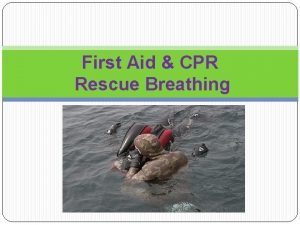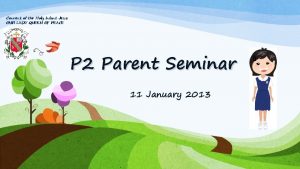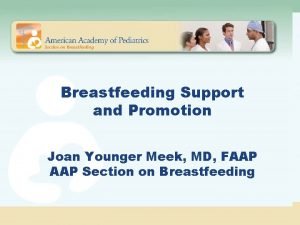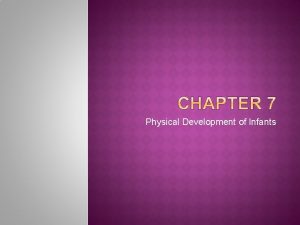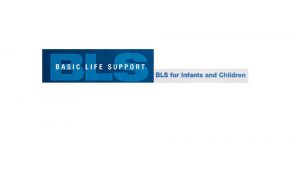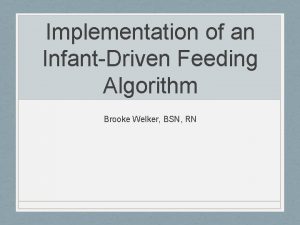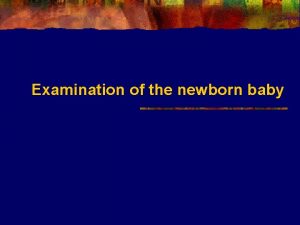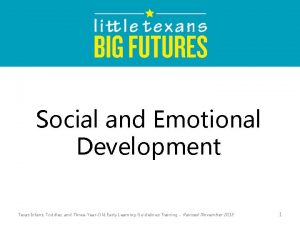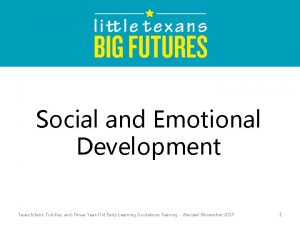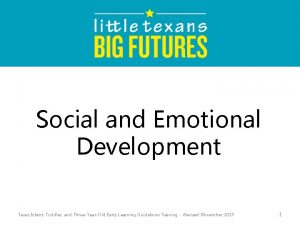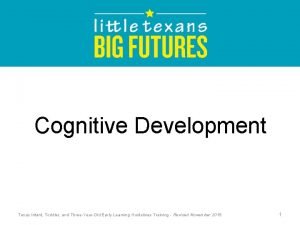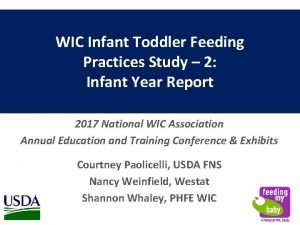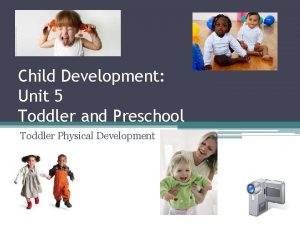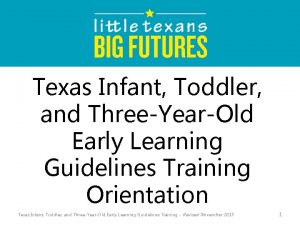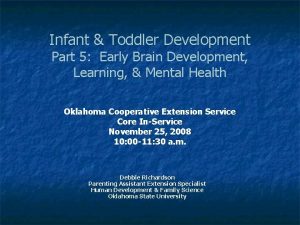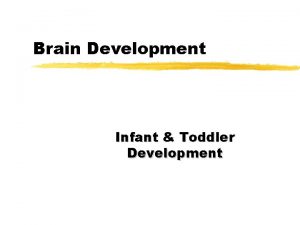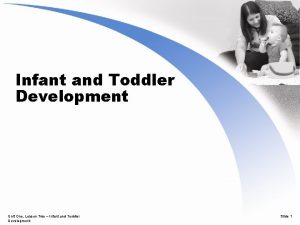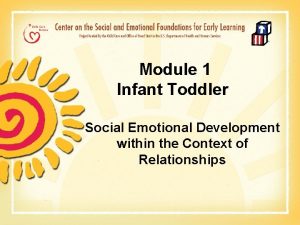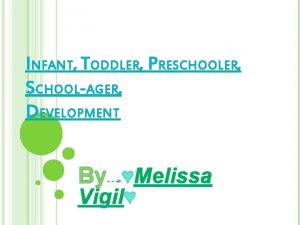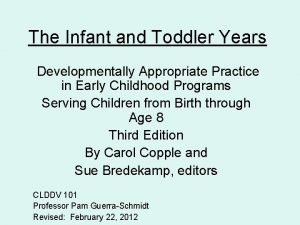Language and Communication Development Texas Infant Toddler and













































- Slides: 45

Language and Communication Development Texas Infant, Toddler, and Three-Year-Old Early Learning Guidelines Training - Revised November 2015 1

Agenda • Language Development Theory • Language Mastery • Stages of Language Acquisition • Language Development occurs within the context of Culture • Listening and Understanding • Communication and Speaking • Caregiver Responses • Emergent Literacy • Texas Inclusion Infant, Toddler, and Three-Year-Old Early Learning Guidelines Training - Revised November 2015 2

Objectives List the stages of language development Define Self-Talk and Parallel Talk in their own words Identify examples of recasting and extension in a video observation Compose open-ended questions to extend language Create a list of inclusion strategies based on a scenario Texas Infant, Toddler, and Three-Year-Old Early Learning Guidelines Training - Revised November 2015 3

Language Development Nativist Languag e Interactio ns Social Learning Texas Infant, Toddler, and Three-Year-Old Early Learning Guidelines Training - Revised November 2015 4

Language Development Nativist • American cognitive scientist – Noam Chomsky. • We are born with everything we need to learn and use language. The brain is ‘wired’ for language. Texas Infant, Toddler, and Three-Year-Old Early Learning Guidelines Training - Revised November 2015 5

Language Development • World renowned psychologist, Albert Bandura – Stanford University • Proposed that infants and toddlers acquire language by listening to others and then repeating it. Social Learning Texas Infant, Toddler, and Three-Year-Old Early Learning Guidelines Training - Revised November 2015 6

Language Development Interactions • Psychologist – Lev Vygotsky. • Jerome Bruner, another American psychologist, expanded Vygotsky’s theory. • Bruner proposed that infants need a social responsiveness to 7 fully develop Texas Infant, Toddler, and Three-Year-Old Early Learning Guidelines Training - Revised November 2015

Responsive Caregiving Observe the child’s needs Respond appropriate ly Child receives the response and needs are met Texas Infant, Toddler, and Three-Year-Old Early Learning Guidelines Training - Revised November 2015 8

Mastering Language Phonology: basic units of sound (phonemes) Morphology: forming words from sounds Semantics: relationship between words and things words Syntax: rules forming sentences from Pragmatics: rules of language in social contexts Texas Infant, Toddler, and Three-Year-Old Early Learning Guidelines Training - Revised November 2015 different 9

Stages of Language Overgeneralization Sentences Telegraphic Speech Two-word phrases Holophrases Babbling Sounds Texas Infant, Toddler, and Three-Year-Old Early Learning Guidelines Training - Revised November 2015 10

Stages of Language Sounds • Infants begin making and responding to sounds from birth Babbling • Begins usually around 4 -6 months. Babbling is the repeating consonant-vowel combinations, ‘baba’ or ‘dada’. Texas Infant, Toddler, and Three-Year-Old Early Learning Guidelines Training - Revised November 2015 11

Stages of Language Holophrase • A single word expressing the ideas of a phrase or sentence. For example, an infant might point to a cup on the counter and ask, “Cup? ” as in, “Is that my cup? ” Texas Infant, Toddler, and Three-Year-Old Early Learning Guidelines Training - Revised November 2015 12

Stages of Language Telegraphic Speech • Combining Two Words into a Simple Sentence. For example, an infant might say “Cat, Sleep? ”, meaning “Is the cat sleeping? ” Cat, Sleep? Texas Infant, Toddler, and Three-Year-Old Early Learning Guidelines Training - Revised November 2015 13

Stages of Language Holophrases Telegraphic Speech Overgeneralizati on At around age 3, children begin mastering the rules of grammar. As they start to understand a rule, such as adding ‘ed’ to create past tense and they will overgeneralize the rule. Texas Infant, Toddler, and Three-Year-Old Early Learning Guidelines Training - Revised November 2015 14

Language Acquisition 4000 Word Count 4000 3000 2000 1000 5 40 150 12 - 15 18 20 300 24 36 48 Age in Months Texas Infant, Toddler, and Three-Year-Old Early Learning Guidelines Training - Revised November 2015 15

Language “Mixer” Activity Take a few minutes and reflect on a few of the questions that are asked in the Mixer. Write down your thoughts. Find a person who has responded to the same questions and share what you’ve written. Adapted from Lori Goodwin Bowers @ West. Ed, The Program for Infant/Toddler Caregivers Texas Infant, Toddler, and Three-Year-Old Early Learning Guidelines Training - Revised November 2015 16

Infant and Toddler Language Infant and Toddlers: • Learn language in the context of human relationships and experiences • Learn through everyday routines and activities. • Language development will vary from social-cultural context to social-cultural context. Texas Infant, Toddler, and Three-Year-Old Early Learning Guidelines Training - Revised November 2015 17

Culturally Appropriate Practice • Be aware of your social-culture influences and how language experiences vary from one culture to another • Connect with families and learn about traditions and customs • Make use of home languages in the classroom • Children develop a sense of who they are and what is important within the context of culture. • Exhibit diversity in the environment, books, toys, etc. Texas Infant, Toddler, and Three-Year-Old Early Learning Guidelines Training - Revised November 2015 18

Listening and Understanding The indicators are: • Listens with interest to language of others • Responds to nonverbal and verbal communication of others • Begins to understand the rules of conversation Texas Infant, Toddler, and Three-Year-Old Early Learning Guidelines Training - Revised November 2015 19

Communication and Speaking The indicators are: • Uses consistent sounds, gestures, or words to communicate for a variety of purposes • Imitates sounds, gestures, signs, or words • Uses language to engage in simple conversations Texas Infant, Toddler, and Three-Year-Old Early Learning Guidelines Training - Revised November 2015 20

Birth – 8 Months Listening and Understanding: • Eye Contact • Social Smile • Joint Attention Communication and Speaking: • Sounds and Cooing • Crying • Babbling Texas Infant, Toddler, and Three-Year-Old Early Learning Guidelines Training - Revised November 2015 21

Reflection On the bottom of page 1 in your Participant Guide, define in your own words Self-Talk & Parallel-Talk: Texas Infant, Toddler, and Three-Year-Old Early Learning Guidelines Training - Revised November 2015 22

Caregiver Responses • Build relationships • Respond and take turns • Respond to non-verbal communication • Self-Talk and Parallel Talk • Expand on vocabulary • Read Texas Infant, Toddler, and Three-Year-Old Early Learning Guidelines Training - Revised November 2015 23

8 -18 Months Listening and Understanding: • Understand simple instruction • Recognize object names Communication and Speaking: • 5 -20 words, mostly nouns • Holophrases Texas Infant, Toddler, and Three-Year-Old Early Learning Guidelines Training - Revised November 2015 24

Caregiver Responses • Listen and respond • Model language • Songs, word-games, rhymes • Expand vocabulary • Read Texas Infant, Toddler, and Three-Year-Old Early Learning Guidelines Training - Revised November 2015 25

18 -36 Months Listening and Understanding: • Listens and responds • Follow two-step instructions • Engages in peer conversations Communication and Speaking: • Two-word phrases (20 months) • Telegraphic speech (24 months) Texas Infant, Toddler, and Three-Year-Old Early Learning Guidelines Training - Revised November 2015 26

Caregiver Responses • Recasting • Expansion • Comfort with language • Ask open-ended questions • Provide novel subjects and experiences • Read Texas Infant, Toddler, and Three-Year-Old Early Learning Guidelines Training - Revised November 2015 27

Extending Language • Take out page 2 in your Participant Guide. • Watch the video. Write down your answers to the following questions. – What examples of recasting and extending language did you hear? – What new vocabulary did the caregiver introduce? Texas Infant, Toddler, and Three-Year-Old Early Learning Guidelines Training - Revised November 2015 28

Extending Language Texas Infant, Toddler, and Three-Year-Old Early Learning Guidelines Training - Revised November 2015 29

Extending Language • What examples of recasting and extending language did you hear? • What new vocabulary did the caregiver introduce? Where did it go? You want the stars to go on the mat? Where are you going to move the ball so that the stars go on the mat? Stars, mat, move, ball Texas Infant, Toddler, and Three-Year-Old Early Learning Guidelines Training - Revised November 2015 30

36 -48 Months Listening and Understanding: • Follows three-step directions • Conversations with peers • Respond to questions Communication and Speaking: • 4000+ words • Describe and communicate feelings • Apply past tense and possessive rules Texas Infant, Toddler, and Three-Year-Old Early Learning Guidelines Training - Revised November 2015 31

Caregiver Responses • Create opportunities for child-child conversations • Word games • Ask open-ended questions • Provide novel subjects and experiences • Listen • Read Texas Infant, Toddler, and Three-Year-Old Early Learning Guidelines Training - Revised November 2015 32

Open-Ended Questions • Have many possible answers • Stimulate critical thinking and discussion • Encourage sharing of personal views and feelings • Lead to even more questions and discussion • Encourage language development Is the puppy sad? How do you think the puppy is feeling? Texas Infant, Toddler, and Three-Year-Old Early Learning Guidelines Training - Revised November 2015 33

Open-Ended Questions Activity 1 Turn to page 2 in your Participant Guide. Rephrase the close-ended questions, to open-ended questions. Texas Infant, Toddler, and Three-Year-Old Early Learning Guidelines Training - Revised November 2015 34

Open-Ended Questions Activity 1 • Share your response Tell me about your drawing. How do you think the boy is feeling? Can you describe how the butterfly got in? Texas Infant, Toddler, and Three-Year-Old Early Learning Guidelines Training - Revised November 2015 35

Emergent Literacy The indicators are: • Shows interest in songs, rhymes, and stories • Develops interest in and involvement with books and other print materials • Begins to recognize and understand symbols • Begins to develop interests and skills related to emergent writing Texas Infant, Toddler, and Three-Year-Old Early Learning Guidelines Training - Revised November 2015 36

Literacy Language Listening Writing Reading Texas Infant, Toddler, and Three-Year-Old Early Learning Guidelines Training - Revised November 2015 37

Promoting Literacy TALK y a l P Play Read y a Pl Read READ Texas Infant, Toddler, and Three-Year-Old Early Learning Guidelines Training - Revised November 2015 38

Infants • Have books available for exploration – Cloth books – Photo books • Songs, finger plays, puppets, and poems • Hold and cuddle while reading • Rhyme, Repetition, Rhythm • Involve the infant, stop when they lose interest Texas Infant, Toddler, and Three-Year-Old Early Learning Guidelines Training - Revised November 2015 39

Toddlers • Print rich environment – Labels – Art materials – Books • Read individually and in small groups everyday • Cozy places to read • Interactive • Use storytelling, music, and dramatic play Texas Infant, Toddler, and Three-Year-Old Early Learning Guidelines Training - Revised November 2015 40

Three-Year-Olds • Print rich environment – Labels – Writing center – Books in every center • Opportunities for reading individually and small groups • Interactive • Music, Dramatic Play, and Listening centers • Dictation • Expand with projects and activities Texas Infant, Toddler, and Three-Year-Old Early Learning Guidelines Training - Revised November 2015 41

Inclusion Strategies • Available materials • Visuals and Sign Language • Picture/word charts Snack Read Home Texas Infant, Toddler, and Three-Year-Old Early Learning Guidelines Training - Revised November 2015 42

Inclusion Scenario Activity 2 • Turn to page 3 in your Participant Guide. • In small groups read through the scenario and create 2 -3 inclusion strategies that might be appropriate for this child, then we will share a few. Texas Infant, Toddler, and Three-Year-Old Early Learning Guidelines Training - Revised November 2015 43

Inclusion Scenario Activity 2 Use signs when Phillip is doing routines Say name of children as well as sign Providing books/pictures with sign-language and hearing aids. Talking to children about differences Texas Infant, Toddler, and Three-Year-Old Early Learning Guidelines Training - Revised November 2015 44

Conclusion • Action Plan – Based on what I’ve learned today, what changes will I make next? • Q&A Texas Infant, Toddler, and Three-Year-Old Early Learning Guidelines Training - Revised November 2015 45
 Brigance test for 2 year-old
Brigance test for 2 year-old Drdp infant toddler essential view
Drdp infant toddler essential view Infant/toddler sensory profile score sheet
Infant/toddler sensory profile score sheet Banajee list of toddler vocabulary
Banajee list of toddler vocabulary Pediatric uti antibiotic choice
Pediatric uti antibiotic choice Toddler dönemi nedir
Toddler dönemi nedir Toddler fracture
Toddler fracture Baby fever chart
Baby fever chart Toddler observation examples
Toddler observation examples Personality development in infants
Personality development in infants Think pair share example
Think pair share example Corruption
Corruption Social impulses foster infant language
Social impulses foster infant language Social impulses foster infant language
Social impulses foster infant language Picme2.0
Picme2.0 Keeping an infant safe and well section 7-3
Keeping an infant safe and well section 7-3 Kenmore park infant and nursery school
Kenmore park infant and nursery school Keeping an infant safe and well section 7-3
Keeping an infant safe and well section 7-3 Saguaro infant care and preschool
Saguaro infant care and preschool Sparhawk nursery
Sparhawk nursery Berk 8th edition
Berk 8th edition Jama 2017
Jama 2017 Hart plain infant school
Hart plain infant school The infant industry argument
The infant industry argument Intraosseous meaning
Intraosseous meaning Imr formula
Imr formula Infant compression to ventilation ratio
Infant compression to ventilation ratio Vastus lateralis injection site infant
Vastus lateralis injection site infant Pain scale 1-10 examples
Pain scale 1-10 examples Direct coombs test pregnancy
Direct coombs test pregnancy Proportionate mortality rate formula
Proportionate mortality rate formula Primitive reflexes chart
Primitive reflexes chart Module 45 developmental issues
Module 45 developmental issues Juan soriano la niña muerta; the dead girl; dead infant
Juan soriano la niña muerta; the dead girl; dead infant Infant reflexes chart
Infant reflexes chart Infant blood pressure
Infant blood pressure Transport incubator
Transport incubator Infant botulism
Infant botulism Llf in first aid
Llf in first aid Convent of the holy infant jesus school
Convent of the holy infant jesus school Weight gain in infant
Weight gain in infant Compression to ventilation ratio adults
Compression to ventilation ratio adults Growth refers to
Growth refers to Cpr objectives
Cpr objectives Infant-driven feeding scale
Infant-driven feeding scale Femoral pulse in child
Femoral pulse in child



